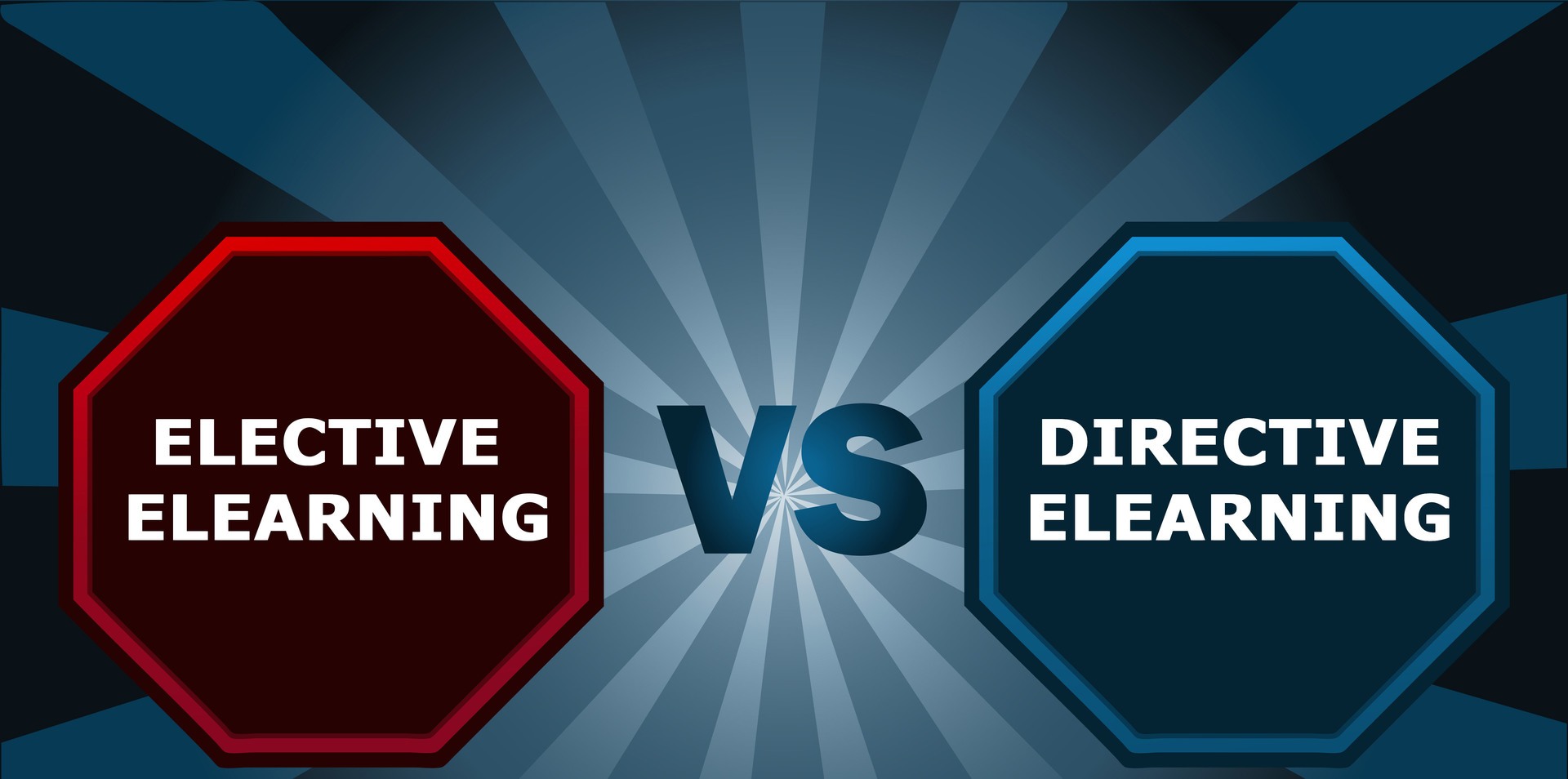Elective Vs Directive eLearning
Consumer trends point directly at a powerful and fast paced on-demand content consumption movement. Whether it be Google, Amazon Prime Video, Netflix, or YouTube, the trend is real and here to stay. Training organizations have taken notice and are increasingly moving towards on-demand eLearning libraries to align with this trend. These on-demand eLearning libraries are leveraging curated content and internal content and being served up on a lightweight mobile learning platform outside of their traditional Learning Management System (LMS).
However there are still companies that are struggling to decide whether to keep their Learning Management System and their traditional mandatory (directive) content and or move to an on-demand (elective) or use a combination of both. These aren't easy decisions to make because of the time, energy, and money invested in previous programs.
Using the points found in the infographic, let’s compare and contrast each of these and look at how they impact a company when exploring the dilemma elective vs directive eLearning.
- Learner Completion Rate
- Elective
When asking, not telling, a learner to consume content there will be a lower completion rate. Elective training is just that; elective. - Directive
If a learner knows that they must complete a training program, 9/10 will. Having said that, let’s not confuse completion with engagement and understanding.
- Elective
- Learner Engagement
- Elective
A learner who seeks out specific content is likely to be more engaged. They understand the power of knowledge and subsequently took the time to seek it out. Of course there’s always the chance that the content won’t be viewed at all, in which case engagement will be zero. - Directive
Unfortunately, many directive programs start with negative learner connotation before the programs even get started, mainly due to a history of poor programs or flavor of the month training programs. It’s important to get learner buy-in before assigning directive learning. This will allow the learner to open their minds to engaging with the content.
- Elective
- Suited For Which Type Of Training
- Elective
“Just in time”: When the learner wants knowledge on a specific subject at the moment of need. Similar to how people search google or an intranet. - Directive
Compliance: Great for organizations to ensure that they have educated their employees on specific regulatory compliances. An elective training simply can’t guarantee participation.
- Elective
- Learner Appreciation
- Elective
High: Think about how frustrating it can be looking through old workbooks or training material trying to find the information needed. When learners are able to quickly and precisely find the information they want or need it puts a smile on their face. - Directive
Low: Now think of a time you’ve been made take an eLearning course that takes 6-10 hours to complete. Most likely you didn’t need to spend a whole day taking a course, or you felt like your time would have been better spent elsewhere. Learners tend to not appreciate mandatory training because they don’t always see the instant benefits of participating in it. Obviously, this isn’t always the case, but it seems to be the most common feedback.
- Elective
- Runway To Success
- Elective
Long: Organizations can create or curate all this great content and it may sit on the e-shelf gathering e-dust because employees aren’t used to having elective training. Therefore, on average the runway to success tends to be longer. If the content is aligned to the current needs of the employees, and is constantly being marketed and promoted to them this runway can be drastically reduced. - Directive
Short: Success in directive training is typically measured by answering the question “did the training program get completed, yes or no?”. If a learner is required to take training content and its purposed is to be tracked and measured this way runway to success is short.
- Elective
Selecting the right type of training approach (directive or elective) can go a long way to determining organizational training program success, for years to come. So next time you’re looking at your organization’s learning strategy, take a moment to run through this list and decide what’s the most important to you, your learners, and your organization for now and in the future.




